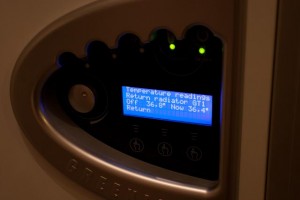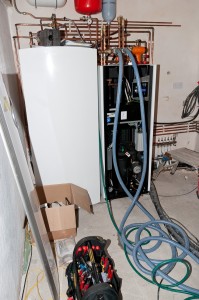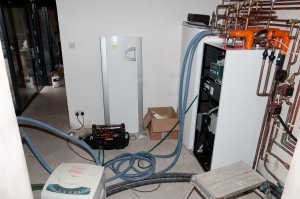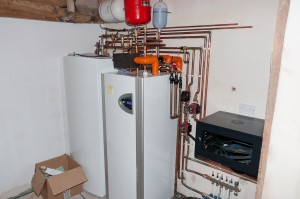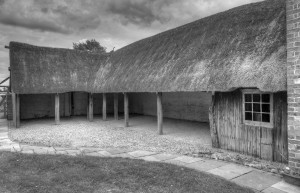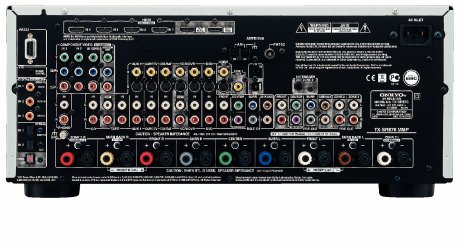Over the last few months I’ve been researching and planning a reasonably large building project to convert a thatched barn adjoining my house into additional living space. This new living space will obviously require space heating and domestic hot water (DHW) and so part of the project research has been concerned with investigating and choosing the system to be used.
As our village is off the mains gas grid, the main options open to use are:
- oil
- gas (LPG)
- electric
- some form of renewable such as air/ground source heat pumps (GSHP), solar thermal, solar photovoltaic (PV), biomass or a combination of these
Our current heating and DHW system is based around electrically heated water driving a traditional wet radiator distribution system. Although powered by electricity, this system has operated relatively efficiently over the last 12 years due to it using a special low rate tariff for the majority of the time. However, this is a bespoke system produced by a company that went out of business several years ago so knowledge and spare parts are pretty scarce, and this coupled with the fact that it would not be large enough to satisfy the requirements of the new complete house means that continuing to use this system would not be viable. We could choose to continue using the existing system for the old part of the house and install a completely new, separate system for the barn conversion but I feel the right thing to do would be to install a completely new system to cover the whole house, old and new. Scared by the thought of ever increasing fuel costs, the idea of a green / renewable energy based system started to appeal more and more. When also taking into account the generous benefits of the Renewable Heating Premium Payment (RHPP) and Renewable Heating Incentive (RHI) schemes (more on this later), it starts to sound even more attractive.
The ground source heat pump
Looking at our particular situation the main technology standing out was a ground source heat pump (GSHP). I had vaguely heard of this technology before but after doing a lot of research it became apparent that this would be ideal for our requirements, particularly because we have a large paddock immediately adjacent to the house and garden in which the ground loop collector pipes could be buried. If you are unfamiliar with what a ground source heat pump is, here is a very brief overview…
The ground below us stores energy from the sun as heat and from a depth of around 1m below the surface the temperature remains pretty constant all year round (between around 7°C to 13°C in the UK). It is possible to extract some of this heat energy using liquid filled collector pipes buried in the ground. The liquid is pumped through the pipes and this warms up as the heat from the ground is transferred to the liquid. Only a few degrees difference in temperature between the flow and return is enough to drive a heat pump unit which can be simplistically described as a refrigerator in reverse! It uses a system of compressors, condensers and heat exchangers to convert the small temperature differentials in the liquid coming from and going to the ground collector pipes (low grade heat) into hot water which can be used for space heating and domestic hot water (high grade heat). Once the heat energy has been extracted from the collector pipe liquid, the cooler liquid is pumped back into the ground collector pipes for the whole process to be repeated.
So, the only “fuel” used in this system is the solar energy extracted from the ground (which is free to us!) and the electricity used to drive the heat pump system. For a system sized correctly and operating efficiently you can expect it to be 400% efficient, that is for every one unit of electricity used to power the system you will get four units of heat energy out of it. Sounds good, doesn’t it! The heat pump can generate hot water for both heating and DHW. It works best driving underfloor heating due to the lower maximum temperature of the hot water it produces (up to 65°C) when compared with traditional carbon fuel based water heaters. However, it can drive radiator based distribution systems albeit at a lower temperature than traditional installations.
Ground loop collector pipes
There are different strategies for the installation of ground collector pipes depending on the land available. Possible options are:
- straight pipe loops in horizontal trenches
- coils of pipes, also known as “slinkies”, in horizontal trenches
- “compact collectors” (which look like plastic radiator panels) oriented either horizontally or vertically in horizontal trenches
- straight pipe loops in deep vertical boreholes (anything up to 200m in depth!)
- horizontal pipe loops under water (in a lake or river)
The most common approach is to use horizontal trenches of either straight pipe loops, where enough land is available, or slinkies where there is less available space. In our situation, the most cost effective and suitable option is to use slinkies.
The heat pump and cylinder
The heat pump itself is typically a tall fridge/freezer sized unit with various ancillary expansion vessels and pipework. The flow and return pipes to and from the ground collector pipe system connect into the heat pump as do the heating and DHW pipes. A separate highly insulated cylinder stores the heated water ready for its use. One attractive option for the cylinder is that it can incorporate a separate pipework coil internally which can be connected to a solar thermal installation. This means that hot water from the solar thermal panels can feed into the heating/DHW system thereby offsetting the amount of heat required from the GSHP which in turn increases the overall efficiency of the system (remember, the solar thermal heated water is free – ignoring the installation cost – too!)
Choosing a supplier and a specification for the system
Having decided that a GSHP was the technology to go for the next decision was to find a supplier and installer. I was very keen to find a company who had significant experience of this technology, a good reputation and good levels of support as it is vital that the system is sized and installed correctly for it to operate efficiently. The company would also have to be MCS (Microgeneration Certification Scheme) accredited in order for the installation to qualify for the various government grants available.
After a lot of research I decided to go with ICE Energy given their excellent reputation and long history of supplying and installing GSHP systems. My ICE Energy sales contact Richard Floyd was very knowledgeable and helpful throughout the whole process and provided answers to my many (and there were a lot!) and varied questions. After an initial assessment of the requirements, including details of the property, it’s construction, levels of insulation, number of rooms, ratio of space heated by radiators to that to be heated by underfloor heating, land available for ground collector pipes etc. Richard produced a specification for a system comprising an 11kW IVT Greenline HT+ E11 heat pump, 600m of ground collector pipe installed as 3 x 50m trenches of slinkies and an IVT STS280 280 litre cylinder with solar coil. A further site survey was carried out shortly afterwards by a very knowledgeable and friendly engineer Adrian Rawle to ensure that the initial system specification was suitable and appropriate, and to finalise any fine detail specific to my particular installation. ICE Energy are responsible for the specification of the system, the supply of all components, unlimited technical support during installation and final commissioning of the system once installation is complete. The actual installation of the ground collector pipes will be carried out by my main building contractor responsible for the barn conversion and the installation of the heat pump, cylinder and associated plumbing and electrics will be carried out by the plumbing and electrical sub-contractors working on the barn conversion.
Government grants – RHPP and RHI
It’s worth saying something about the government grants associated with the installation of renewable heating systems as it was a big factor taken into consideration when determining what system and technology to go for. The UK government has made a big commitment to green and renewable energy and one aspect of this is encouraging the take-up of such technologies in the commercial and domestic sectors. For domestic installations this translates into providing two grant and subsidy schemes known as the Renewable Heat Premium Payments (RHPP) and the Renewable Heat Incentive (RHI). RHPP is a short term scheme (scheduled to finish in April 2012) which provides a grant towards the installation of qualifying renewable heating systems. Ground source heat pumps are a qualifying technology which attracts a grant of £1,250. More interestingly, RHI is a longer term scheme scheduled to start in October 2012 which will result in guaranteed index linked payments for a period of 23 years (in the case of GSHP installations) based on the amount of heat energy a qualifying system is generating. The final tariffs have yet to be determined but the estimate at this time is that our particular installation would attract payments of between £1,500 – £2,000 a year!
What next?
The barn conversion has already started (look out for details of progress in other blog posts) so at some point in the next few weeks the work will start to install the ground loop collector pipes in the paddock.
Watch this space!
